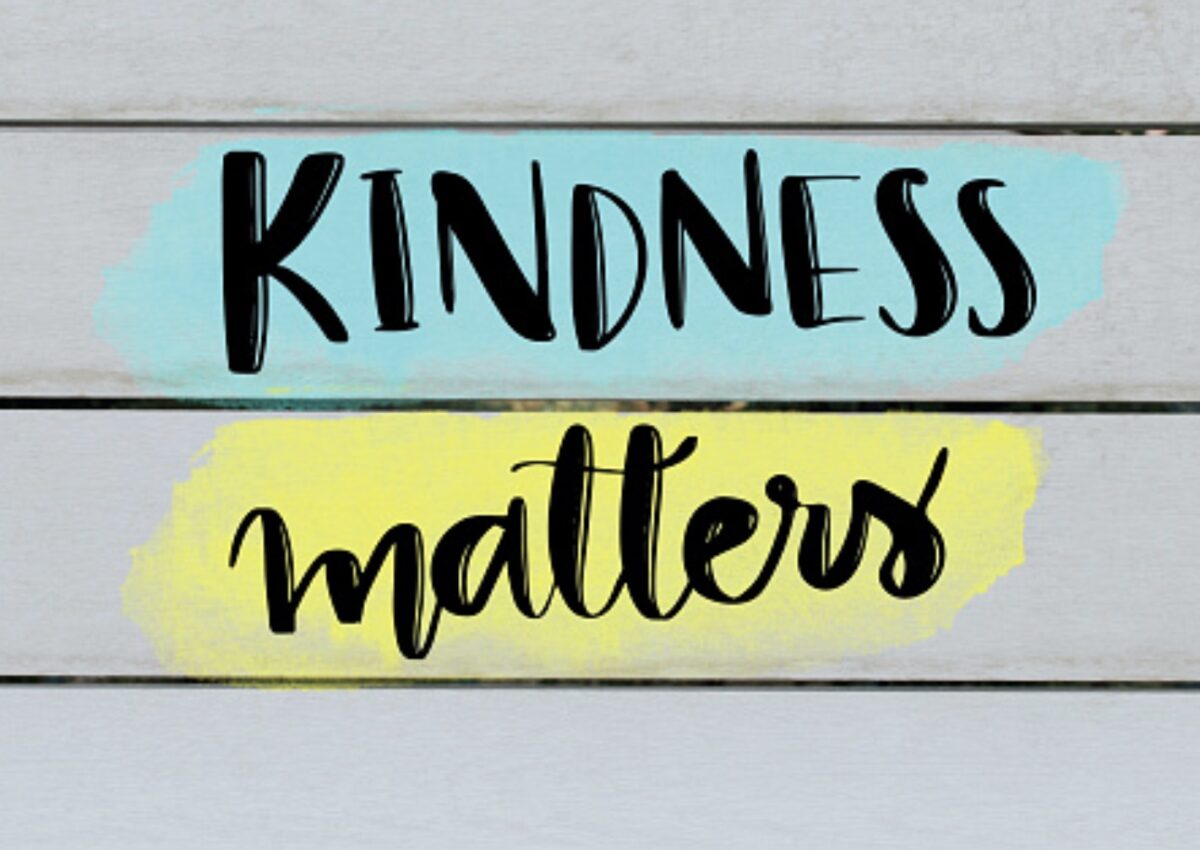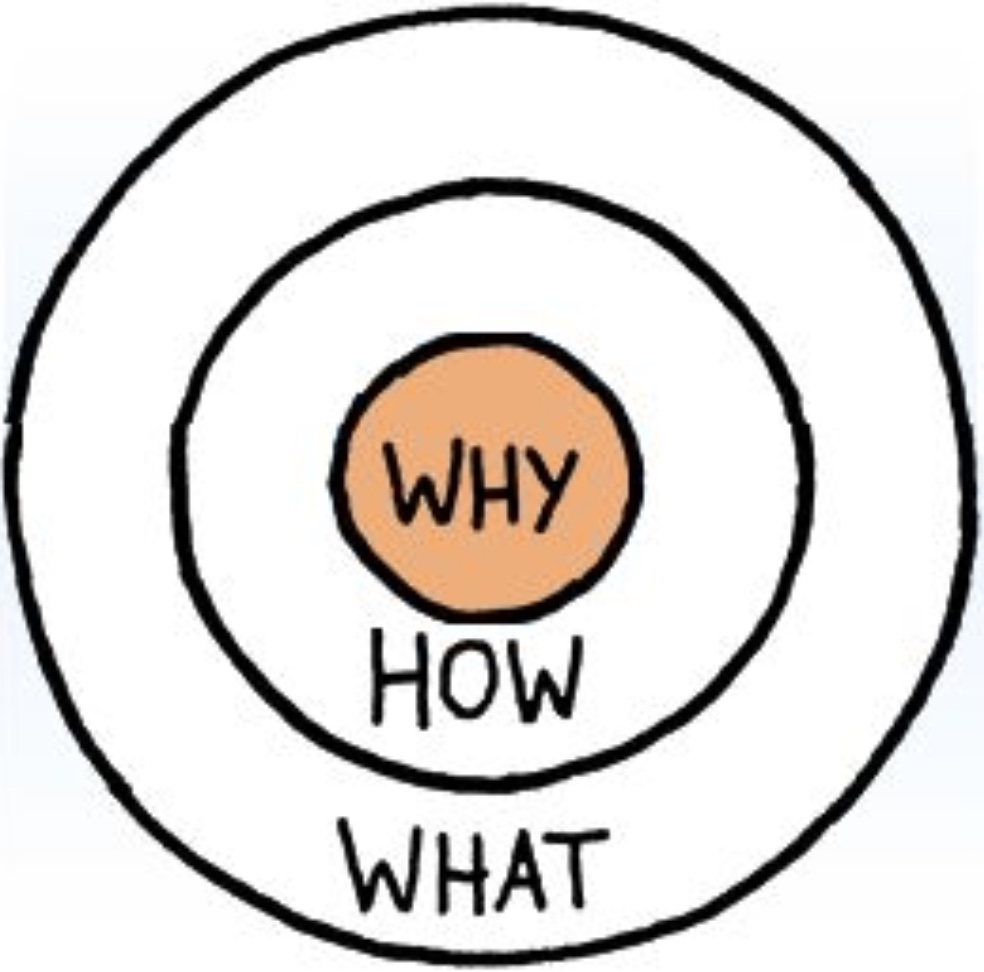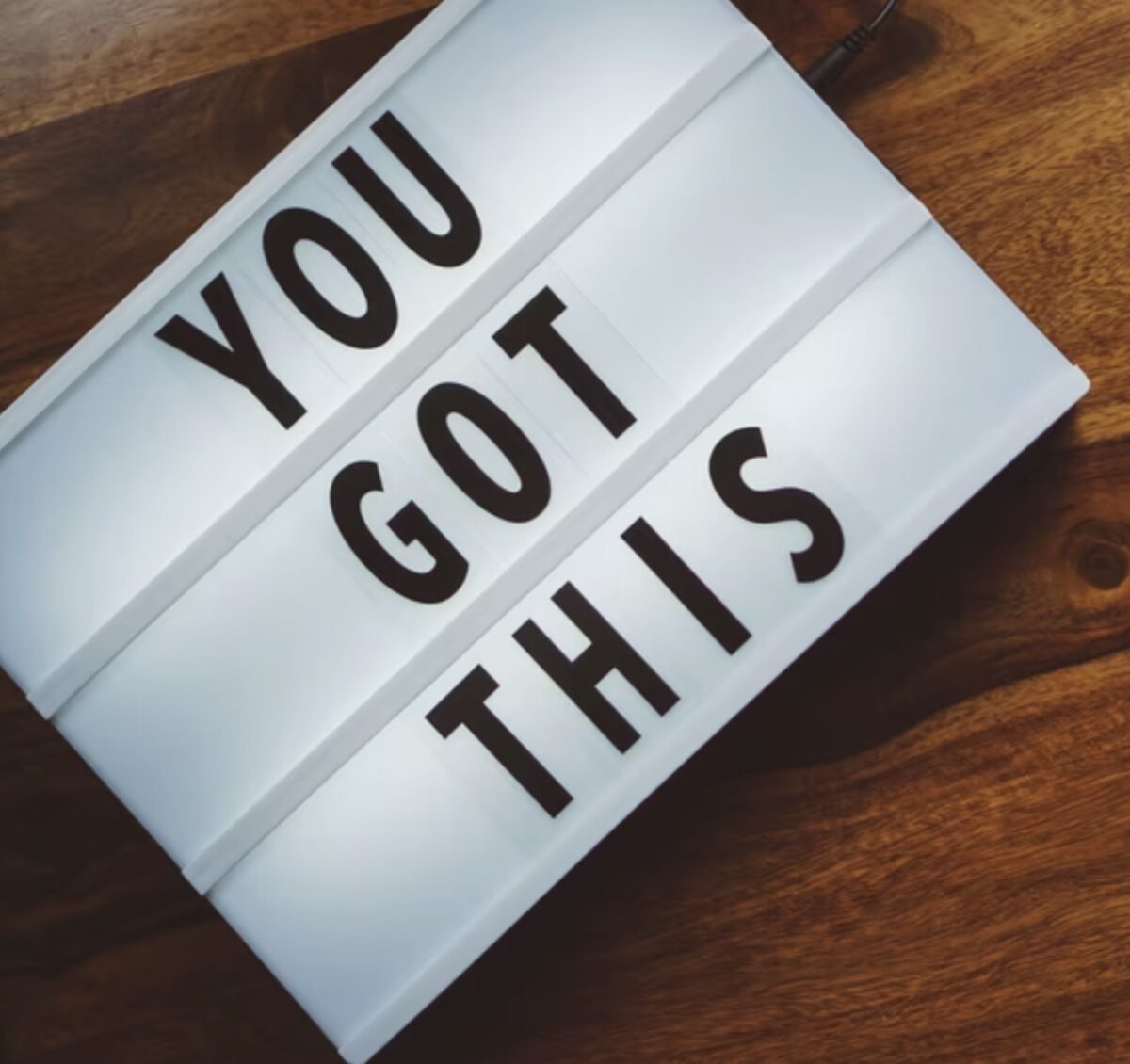Goal Setting Defined As Generosity
To have goal setting defined properly, we must believe that “pursuing and achieving goals is not selfish.”
The most generous we can live is by achieving our goals. Because, our goals, no matter what they are, will be achieved when we serve others. And the world is starving for more of us to start serving people.
This post helps you understand how to have goal setting defined so that it actually works, every time, one hundred percent of the time, to make your life better!
Author Ken Robinson has an incredible explanation for why we are at our best when we are in alignment with our own goals. He says people feel most themselves, most inspired and achieve at their highest levels when they reach their “element”. Our element is defined as the point at which talent meets passion.
Therefore the best thing we can do is set goals that help us discover our own personal element.
Why Is It So Difficult To Achieve Big Goals?

Many people struggle to achieve their goals.
They look at other successful people with envy, instead of energy.
Many of us feel like we are working hard, but not getting anywhere. Here’s the thing. Our big dreams can work. They can come true. But only if we put in the work.
Our big dreams also may not come true. That’s just a simple fact. However, the process of working toward them has a tremendous impact on our happiness level in life. But, again, only if we are working on them.
And the best way to ensure we are working on our dreams is to understand goal setting, how to create an action plan, and build momentum.
Goal Setting Defined As Part Of The Process
A lot of people will say that they “don’t have a big dream”. In this instance it is more likely that they have developed dream blockers. At some point, they were able to dream. And, at some point that changed because life or society made them think otherwise.
Regardless of whether you can name a big dream right now or not, this article will really help you. Because, instead of just trying to think of dreams, or goals, the three activities will force you to take action in a systematic, yet creative way.
This systematic approach of using three different types of goal setting boards will bring clarity and simple next steps.

We’ve all heard sayings like “good things come to those who wait”, or “hard work pays off”. These statements can come true. But they also may not. We need to make sure that we add “smart work” to the process as well. Traditionally we do this in terms of setting “S.M.A.R.T Goals”.
But, we can add some intelligent work also. This intelligent, dreamlining work comes from creating three different boards that help craft your vision, dreams and actions. Goal setting defined by putting these boards together is really effective.
The bottom line is this. To live with vitality, it is important to take action on things that challenge you. In order to take action, you need to be clear on what those things are.
If you do know that they are, how do you make each of your next steps really simple? And, how do you track and monitor your progress? This is where it is so important to focus on both the art and science of writing things down.
Deciding What You Want
We can all think of people that seem to accomplish anything they set their mind to. You know those people who seem super confident setting a goal, crushing it and then moving on to the next goal? Well those people have one big thing in common. They are clear on what they want.
On the other hand we can think of examples where people seem to wander through life without a clue of what they want. A classic example of this comes from Alice In Wonderland. In the story Alice starts out with a goal of getting home.
But by the time she asks the Cheshire Cat which way to go she already lost sight of her plan. When the cat asks Alice, “where do you want to go?”, she says, “I don’t much care.” To which the cat replies, “Then it doesn’t matter which way you go.”
This is a great analogy for life as it relates to clarity and goal setting. We will wander if we don’t have a clear vision. There can be a complexity to setting goals the best way possible which we will cover throughout this post. But, overall it simply requires four things.
Clarity of your dreams and goals. A clear why meaning and purpose. An action plan. And the ability to track progress and pivot if necessary.
It Always Starts With The Most Simple Question
One of the most underrated questions when it comes to life coaching, or helping people set goals is “what do you want?”
You would think this might be common sense, but it is not that common. We often give people with the same passions the same advice. We make the mistake of assuming that we know what they want based on what other people have done in that field.
For example, we think a musician would pursue a world tour, a top ten record, and a grammy. Those are reasonable aspirations. But, only if that is what you truly want.
Another example is that someone who plays golf wants to make it on tour. Perhaps you know someone into creating NFTs and you assume that they want to become a millionaire off of a generative art project. Maybe an ecommerce shop owner would want to hit the one billion valuation mark as soon as possible.
But, with each of these examples, there is a lifestyle and other factors to be considered.

Point is, we all have very different definitions of success. Put another way and to reiterate, we all want different things. It is so important when it comes to goal setting, how to create an action plan, and achievement, that we ask questions.
We must ask ourselves questions like “what do we want?” and “where do we want to go?” The answers to these questions come from knowing our why and setting our foundation for life. Once you know your “why” then creating the action plan is really quite straightforward.
Goal Setting To Support Your Why
We have limited time, energy and resources to invest in our goals. Without focus, we will get distracted and never make progress. Anything you say yes to will mean that you are saying no to something else. But knowing the meaning and motivation behind our actions will help us stay focused.
If we want to thrive, instead of just surviving in life, then one of philosophies’ most famous quotes can help. Nietzsche said “he who has a why can endure almost any “how”. While knowing how to set goals is important, we could easily argue the why is far more important. This is true of our big dreams and goals, but it’s also true of anything we do in life.

Why do something if there is not a meaning, or purpose behind it?
Viktor Frankl wrote about the value of meaning when it comes to living a life that is worthwhile to us long term. The catch phrase “life is short” is not meant to scare us. Rather it should motivate us to know the answer to “why am I doing this?” And this is why we gain so much benefit from having our own goal setting defined.
If you want to succeed with a big goal you will need to know your “why”. Not ‘if’ but ‘when’ times get tough you will need to lean on it. You’ll need to lean on it when you feel like giving up. When you need to be extra brave. When it’s time to take an uncomfortable risk. Or simply in explaining the mission to other people, being able to summon the reason for it all will be extremely valuable.
How To Figure Out Your Why
There are a few important things to keep in mind when determining your meaning in life. One, it never ever ends. It may stay very consistent, but pursuing our purpose is a lifelong event. It evolves and shifts along a continuum of being more clear, and less clear.
Our meaning, or “why” is not overly specific. There will be many practical actions and goals set, but knowing our purpose should be general in nature. For example, my why is always something like, “help people live with mental health and vitality by modelling growth mindset, vulnerability and goal setting.”
Also, there is no one way for a person to figure out their own personal “why”. When it comes to deciding on your own purpose it comes down to asking yourself questions and holding space for the answers.
Ask These Questions To Figure Out Your Mission
Who inspires you?
What makes your time fly?
What are your strengths?
Who could you serve?
What problems need solving?
What do you wanna learn?
How do you view your legacy?
What does society need more of?
What does the world need less of?
How do you view success?
Answering these types of questions to craft a personal “why” or mission is extremely useful in terms of filtering the opportunities you pursue, deciding how to spend your time, and identifying your next steps. Once you know why you want this, let’s figure out what to do about achieving it.
The Importance Of Writing Things Down
Why do you think writing down your goals can have such a positive impact on your life? Why do you think writing them down makes them more likely to come true?
There are so many real world examples of people writing down their goals and then manifesting them. Two specific examples from the video in this post are Charlie Rockets, and Steve Harvey.
In each instance, they were both down on their luck and frustrated with the lack of progress toward their desires in life. They both decided to write down their dreams and goals. Because they put their goals out into the universe and put in the action, Charlie and Steve succeeded beyond many people’s expectations. They may even have achieved things they themselves didn’t necessarily “think” would come true. But that’s why it’s not about thinking, it’s about dreaming.

This might seem overwhelming if you are new to goal setting, or if you have trouble dreaming big. If that’s the case you just need more practice. And here is some good news. You aren’t alone.
Many people struggle with identifying what they want. Even more, people struggle with taking what they want and writing it down. Therefore if you get clarity, and write down your goals you will be way ahead of many people. You will have your own personal goal setting defined. More importantly, you will know exactly what to do next as you compete with the only person who truly matters, yourself.
Is It Good To Use Smart Goals?
There is a traditional term that a lot of people use to teach goal setting called “Smart Goals”. Smart goals is actually an acronym for specific, measurable, attainable, realistic and timed. There are some benefits to using this system when setting some of your goals. But it’s not that simple.
Put it this way. A “Smart goal” is better than no goal. It helps because it ensures two things. One, you will build confidence when you complete them. And two, you know that it is possible to achieve it. But, when it comes to achieving our big dreams, there are far too many unknowns that would allow us to be “realistic”, or to make them “timed” because we have no idea when they may manifest.
In truth, if you are truly dreaming big, but are surrounded by small minded people coaching you, then you will get stuck going round and round on questions such as “is this attainable?”. Struggling to set a big goal and taking actions to pursue it would have a far more negative impact when compared to setting a bunch of “Smart Goals” and achieving them all.
Goal Setting Defined By Three Boards
Aside from understanding goal setting, why is it important, and the importance of writing things down, we want to talk about “how” you can write things down. The use of boards is a common way to create a goal setting, or manifestation strategy. We often see people share bulletin, vision, to-do, one thing, dream, goal, learning, manifestation, battle, or action boards.
There are many different ways to organize our mission, by putting our goals onto boards. For the purpose of this post we are highlighting three specific types. What you will notice is that the action board is the only pragmatic, sequential, timed example. The first two boards have nothing to do with S.M.A.R.T. goals and everything to do with imagination. Let your mind run wild, go with your gut, and create your first two boards.

Vision Board
A vision board is like a collage of all the things you could imagine accomplishing. It is meant to give you visuals of things that you would like to manifest in the future. By putting words, pictures, and images on a poster you always have a glimpse at your goals. The timeline for this is open ended. It could be an annual tradition. You could create a vision board that you continually update as life evolves. Or you could create multiple one’s for different topics you care about. The point is to make it visually appealing.
Dream Board

A dream board is similar, but perhaps the greatest difference is it’s about the information. It may not be visually appealing and will simply be a record of things that you would love to accomplish in your wildest dreams. This is a mind map created by typing, writing, or doodling a brainstorm of the three hundred things that you would love to achieve in the future. Take as long as it takes. For some this could be thirty minutes, for others it could take a year. But find some way to record and simply think of the next goal that would be awesome to achieve until you have listed three hundred things. This does not need to be part of your daily process. In fact, it can be put away and revisited every couple years to check off what you’ve accomplished.
Action Board
An action board is unique to the others because it is dedicated less to dreaming and more to defining and tracking the next steps. This is dedicated to helping you with organization and next steps. If you chose only one board to make sure you are on task, this is it.

The two most important things we need to succeed are focus and momentum. The action board helps with both. We can stay focused because it always gives us our next step. We can build momentum because accomplishing this next step motivates us intrinsically to keep going. Think of this board as the day-to-day, small, simple, step-by-step operations planner.
To build an action board, create a journal page, poster, or whiteboard that outlines your big goals and next steps. You can create a template that suits your specific needs, or Download our JKL Action Board Template HERE. Either way, there are a few things you should include.
Manifestation Statement
Start with a manifestation statement. This manifestation statement should combine your why with your plan to achieve it in one simple sentence. It should include specifics as to how, and what you will do to achieve it as well. For example, our statement is “By October 2024, we will run a multi-million dollar business that creates content and products that help people achieve their big dreams, so they won’t end up on their deathbed with regret.” This statement can always be modified, but there is only ever one per person.
Smart Goals
Include some S.M.A.R.T. goals that correlate to timelines. You could choose to craft goals that are dedicated to a one-year, five-year, and ten-year vision. Or, you may choose simply to build your specific goals one month at a time. In our template, we have two sets of actionable goals. We have goals for the year, which are re-evaluated every twelve months. And then we have goals for the quarter, which are redefined every three months.
In setting your specific goals you will run into the question, “how many should I create”. The answer is contextual, but it is simple. Have as few goals as possible. Define what is directly connected to your manifestation statement as a priority. If there are truly equal priorities, then keep them. If not then get rid of them.
Warren Buffet has a tremendous take on how many goals someone should have. He states that a goal should exist only if it serves your greater purpose. It is not possible to have more than 5 goals at a time which fuel this greater purpose. Therefore we should always have between one and five goals to focus on. In our template we have space for 5 goals, but if you can narrow it down to one, or two that may serve you better. Once you have it narrowed down don’t do anything else, at all, ever with your work time.
We could easily identify five plus goals that we have at Just Keep Learning. For starters, get the podcast to 100 episodes. It would be good to grow our text community to 1000 members. Growing the email list to 10000 would be awesome, increasing traffic on the blog, public speaking events, guest podcasting, getting more youtube subscribers, etc. are all great ideas. But we need to stay focused on the most important things.
To-Do List
You should have a space for a “to-do list”. These are the 1-3 next steps that you must accomplish to move that specific goal along. You could write these on the board, or use sticky notes, but be sure to cross it off, or move the sticky notes when you achieve them. In our template we actually provide a space called “Done” to move your sticky notes to. Once you complete the next steps per goal, decide on another few and post them in the “to-do” space.
Why not just erase the items, or throw out the sticky notes? Whether you create this board physically or digitally, you could in theory just cross things off as you do them. But, the psychology of seeing the recent accomplishments in a “completed” space is really motivating. Of course sometimes you need to get rid of the clutter, but feel free to leave those recent accomplishments on the board for a while.
Habit Tracker
Anyone with an interest in productivity and success is interested in developing habits So, in the template provided, we added a habit tracker. The goal of a habit tracker is to put a completion streak together for 30 days to solidify a habit. After the thirty days you will evaluate whether to start the 30 days over again with the same habit, or change the habit.
The science is very clear when it comes to building better habits. You should only be developing one habit at a time. As you succeed you can stack habits, or have many that get better and better (or worse). But when initially creating a new habit pattern it is important to only track one at a time. The habit you choose should be specifically associated with a time and place to help your subconscious brain create a pattern as soon as possible.
Keep New Habits Simple And Small

It is also important to design habits that are very, very tiny in scope. James Clear wrote the book Atomic Habits because the smallest digestible, guaranteed to be completed habit is what we want to track. We can not stress this enough.
The habit should be so small that you are one hundred percent guaranteed to complete it daily, unless there is a mental barrier. For example “open your morning page journal every day once you pour your coffee.”
How long does it take to open a journal? I would guess one second, maybe less. We all have at least one second day to commit to our most important habit. So in other words there is no excuse.
The habit could be in direct relation to one of your goals. For example, if the goal is to increase your subscriber count on youtube to 1,000 people this quarter, your goal could be to post one vertical video per day. But, it doesn’t necessarily have to be directly related.
Say, for example, your goals revolve around writing your first blog and book. But, you always think more clearly and write better when you have exercised. You could track a habit that says you will ride a stationary bike for 5 minutes every morning before sitting down to write.
Goal Setting Defined By Dream Blockers
If you follow the process laid out here to set goals, then as crazy as it sounds nothing will get in your way. Of course life happens. You will face illness, time management struggles, perhaps a death in the family.
Things will happen. No denying it. But those are all things beyond our control. And maybe that’s the best first point. Focus only on what you can control. It is important when you think of something “slowing you down” that you never include things beyond your control.
The most common things that get in our way that we should try to improve are “dream, or goal blockers”. We all face them. We all experience them in different ways and different combinations.
These Dream Blockers Could Be Getting In Your Way
Personal Failure
Playing Copy Cat
Waiting For Consensus
Thinking It’s Been Done Already
Waiting For An Opportunity
Haters Getting In Your Mind
Your Supporters Being Unsupportive
Identify and notice these dream blockers as they come up. If any of them are happening to you, find support systems such as mentors, coaches, a good book, or videos that help you overcome these barriers. When in doubt, focus on your action board that we will share later in this post.
How Can We Ensure Goal Setting Success?
It’s important to point out that our main goal should be to focus on the process. Create your vision and dream boards, but don’t focus on results. The trick to doing so is to focus on the action board. What do you need to do next? Will Smith is infamous for telling us “lay one brick at a time” and then you’ll have a beautiful wall. So that is the main advice to successful goal setting, focus on the process.
Dream big, but when it comes to the day-to-day focus only on realistic performance. What will you do today? Don’t set day to day goals that connect to the outcome. Day to day should be things like “cold call 20 people” or “make two 8×10 paintings” or “post 3 vertical videos on finance”. Things you will achieve because they are completely within your control. These accomplishments will build momentum toward the big dreams.
There are a few other practical ways to give yourself the best possible chance. One is language. Make sure you are using positive words, mantras and prompts. Don’t talk to yourself like the devil on your shoulder. Talk to yourself like the angel who wants you to live well. The way we state our beliefs and thoughts has a huge impact on making progress.
Prioritization is a big one too. In a world with a million messages being sent to us we could always get distracted. It’s very easy to “jump down the rabbit hole” like we see from Alice in Wonderland. Use systems, and habits that improve the chances of staying on task with what you consider important. But this only happens if you are precise in what you want to have happen. Once you are precise, set priorities and keep going.
How Do You Support Someone With Goal Setting?
One of the greatest thought leaders of all time, Les Brown said “Help others achieve their dreams and you will achieve yours.” As a friend, parent, coach, or employer this is definitely the case. We want to help these people in our lives, but it can be challenging. There are a few things to keep in mind when supporting someone else.
Goal setting is useful for everyone. It can help people gain a sense of clarity, motivation and direction. Everyone has or had some big dreams. But many people need emotional support and technical support in setting their goals.
But, people really struggle to set goals completely on their own, especially if they lack confidence. If you are an employer, parent, or coach you may be in a position to help others who don’t know how to set effective goals. You may just want to help a friend or family member. And there are a few things to keep in mind.
Remember, most people go through life without knowing how to achieve their goals. Many people also struggle with identifying what those goals are. There is always a place for us to help them achieve. The most important thing to remember is to find a balance between helping, but allowing them to be themselves. Goal setting defined for someone else simply will not work. Even if it does work, it will have a lot of downsides. Independence and ownership must be the priorities.
Let People Set Their Own Goals
People must feel their own intrinsic connection to the goal. It must be what they want! Never take over the goal setting process. If it is challenging, and emotions run high, take a break and revisit once people are calm. Do not fill in the blanks for someone else. This is their goal, don’t let your own beliefs enter the equation.

You want to build trust with the person. And don’t assume the trust is built because you’ve worked with them for many years, or even because they are your own child. You need to build trust specific to this goal setting session. Discuss their current values and understand what they currently desire.
Make sure they understand the process of a vision board, or dream board and do at least one of those exercises. If the dream blockers are a big problem then focus on dealing with those first. Once some ability to brainstorm dreams and goals is achieved, then help them come up with a plan.
Help them define what they want to do and create some next steps. The best framework for this is to coach them through the Action Board. Help them craft a success mantra, or manifestation statement. Help them come up with annual and quarterly goals. Now, you can assist them in defining a few next steps.
Remember, this is where goal setting defined by S.M.A.R.T. goals is actually helpful. Craft “to-do” items that are simple, measurable, realistic and they can achieve in a specific time guaranteed. Now remind them, that’s all they need to do. Take those next steps. Make the actions happen and never worry about results.
There are only two more things to add. It is important to do a check-in sometimes. Plan to meet again as frequently as possible just to know that someone is there for support and accountability. You may also need to reevaluate the plan. The action board is designed to do this by nature because you will change quarterly and annual goals. But it can be wise to set up the next support check in ahead of time. People will start out on their mission with a lot of excitement, but when times get tough they may need a supportive chat.
Finally, celebrate the small wins. Every little victory or accomplishment should be celebrated as though you just won the lottery, or a championship. Even when we accomplish next steps it can be hard to give ourselves a pat on the back. But this celebration and excitement leads to more energy and confidence. Before you know it, their goal setting boulder will be steaming downhill like a train and nothing can get in the way.
Goal Setting Defined By Jessica’s Example
On her 27th birthday, Jessica started to feel like she is going through a quarter life crisis. She decided it’s time to really put thought into her dreams, goals and how to achieve them in her lifetime.
With the help of a newly hired life coach, she crafted a dream board with a whole lot of great ambitions. After some reflection and discussion, they divided to focus on three things that seem like priorities right now. Jessica wants to get back in shape to run a marathon. She would also like to make money from her long held passion of painting which she has gotten better and better at. Finally, creating a youtube channel that helps young women learn financial literacy is a pretty big passion of hers too.
Now that Jessica has listed these overarching ambitions as the top three priorities in her life, we can craft a plan. We can use an action board to scaffold the goals into smaller next steps and give her the best chance of achieving them. Let’s take a closer look at what this action board could look like.
Why
To be healthy and happy, while I inspire young women to love financial literacy because of the impact it can have on their freedom as artists.
Manifestation Statement
Within seven years I will help thousands of young women pursue the lifestyle of their dreams by inspiring them through my art, and running a successful youtube channel that teaches financial literacy.
Annual Goals
A. Run an official marathon.
B. Gain my first 1,000 subscribers on Youtube.
C. Earn 1 K per month from my art.
Quarterly Goals
A. Sustain steady state cardio for 30 minutes.
B. Create youtube launch strategy, schedule and make first five uploads.
C. Build portfolio site and post 20 plus pieces of digital paintings.
To-Do
A. Use stretching and SMR techniques daily for at least 5 minutes. Ask marathon friend for a beginner’s routine. Restart physio appts with focus on plantar fasciitis help. Begin steady state cardio of 15 minutes every second day. Create a whole food plan.
B. Use a keyword app to search for short form keywords that would optimize my chanel. Ask friends, family and online followers what a name for the channel could be. Start my email list so that subscribers have a place to be part of the community. Review “get started on youtube course”. Create channel art. Create tombstone channel info so it replicates across videos. Start first playlist. Upload video one.
C. Buy domain and site, or choose a creative portfolio app like Behance. Learn from 10 other successful artists. Tweet about digital art at least once per day. Finish the next piece of digital art. Read two articles on NFTs for artists. Post first piece of digital art. Share on Twitter.
Habit Tracker
I will open my fitness journal every night at 8:30 PM and write something.
Summary Of Goal Setting Defined
There are so many areas in which we could set goals. We could focus on spirituality, personal development, finances, self care, fun, career, fitness, hobby, family, charity, education and more. Either way, we are successful when we have goal setting defined in a way that is truly helpful.
Remember, first of all, achieving goals is not selfish. We achieve our goals only if we are in service to others. This is true of a painter, musician, teacher, or stock advisor. The world rewards value.
We also don’t want to have too many goals, or else we won’t achieve any of them. Get focused on one to five goals that you will repeat working on everyday. The best way to do this is by figuring out your why and using it as a foundation.
When it comes to helping others, like our loved ones, it is important to find a balance between allowing them to dream their own dreams, and giving them some structure and support. Don’t ever let your own needs creep into that conversation. Having goal setting defined specifically for them is the priority. It’s not about you!
SMART Goals Suck Sometimes
There is a common misconception that holds people back from achieving their dreams. That is believing that goals need to have “smart” elements.
But, this is impossible if you are dreaming big.
The sub-goals will have “smart elements”, because those are the tangible steps we take. But for the bigger, overarching dreams, there is no right answer. Go with your gut, dream big and write it down. The vision board and dream board we talked about will help with this.

When it comes to taking practical next steps, build yourself an action board that is designed to work for you. You can review your plan annually and quarterly, maybe even monthly if you are the planning type. But, at all other times turn your overthinking brain off and get to work. Simply do the one next thing.
This post, “How Is Goal Setting Defined So You Actually Achieve Your Life Dreams With Confidence?” is all you really need to achieve your big dreams.
Of course, you could find more resources if you WANT, but I promise this is all you NEED.
I would love to hear how you are doing with your own goal setting, the boards you use, or answer any question. If you need help with anything, just let me know @JustKeepLearning on socials.
I’d love to talk about achieving your own big goals and dreams.
Let’s GO!